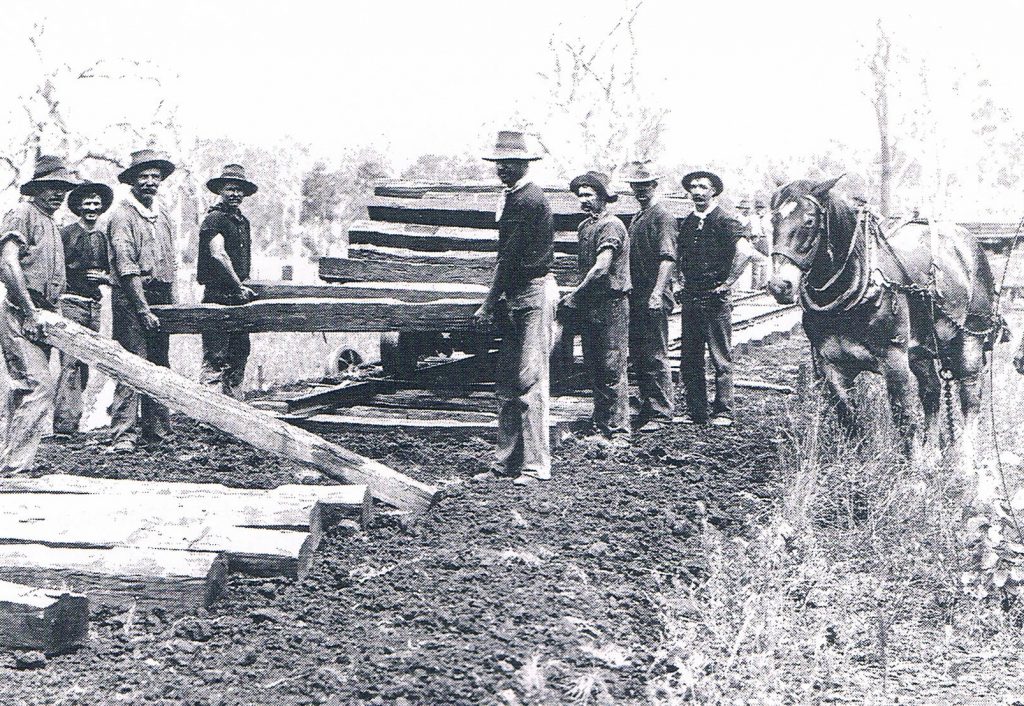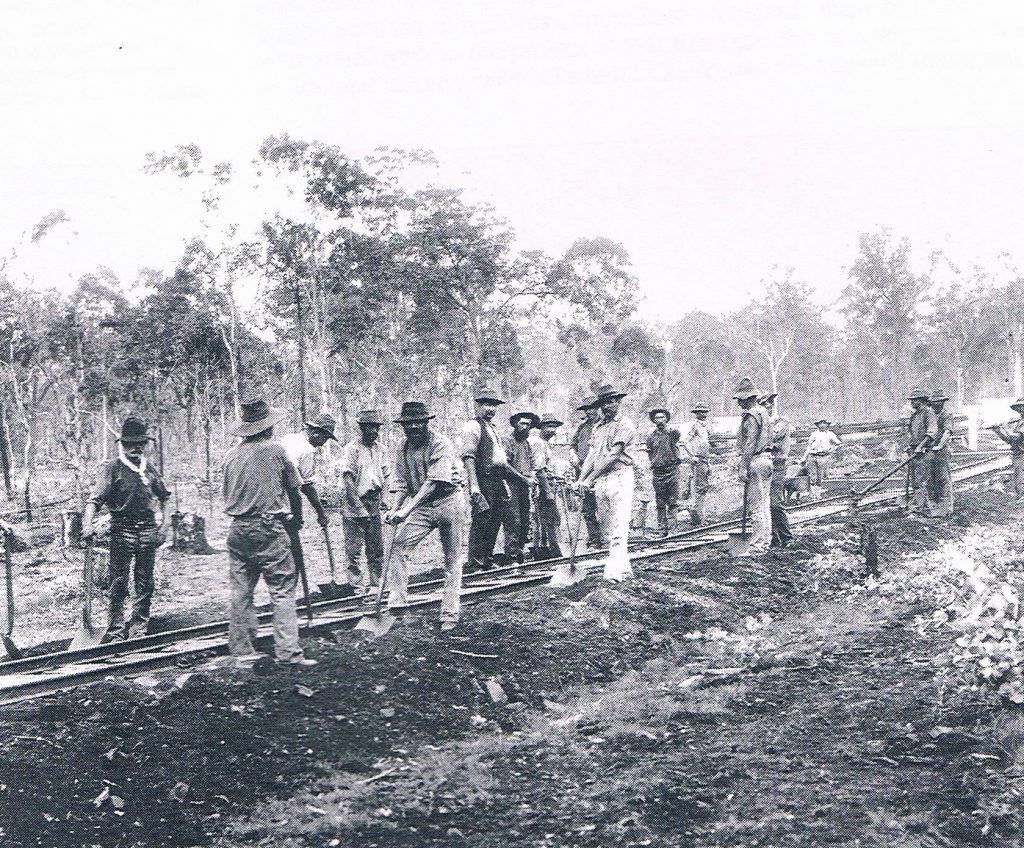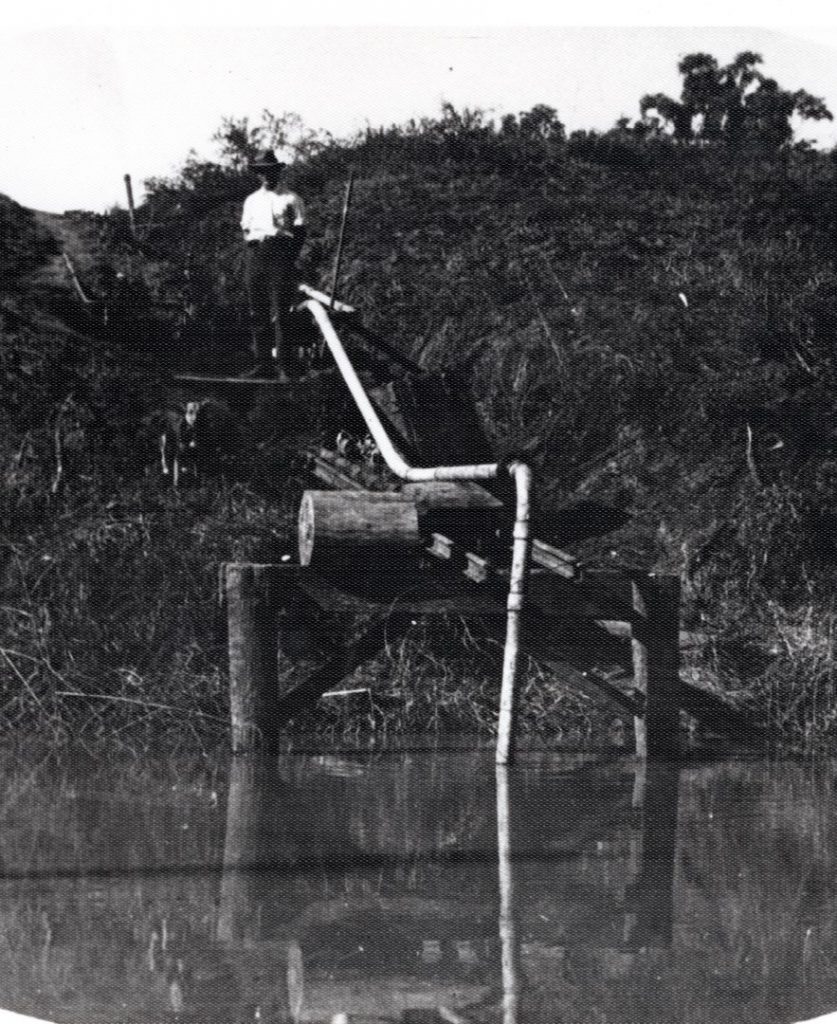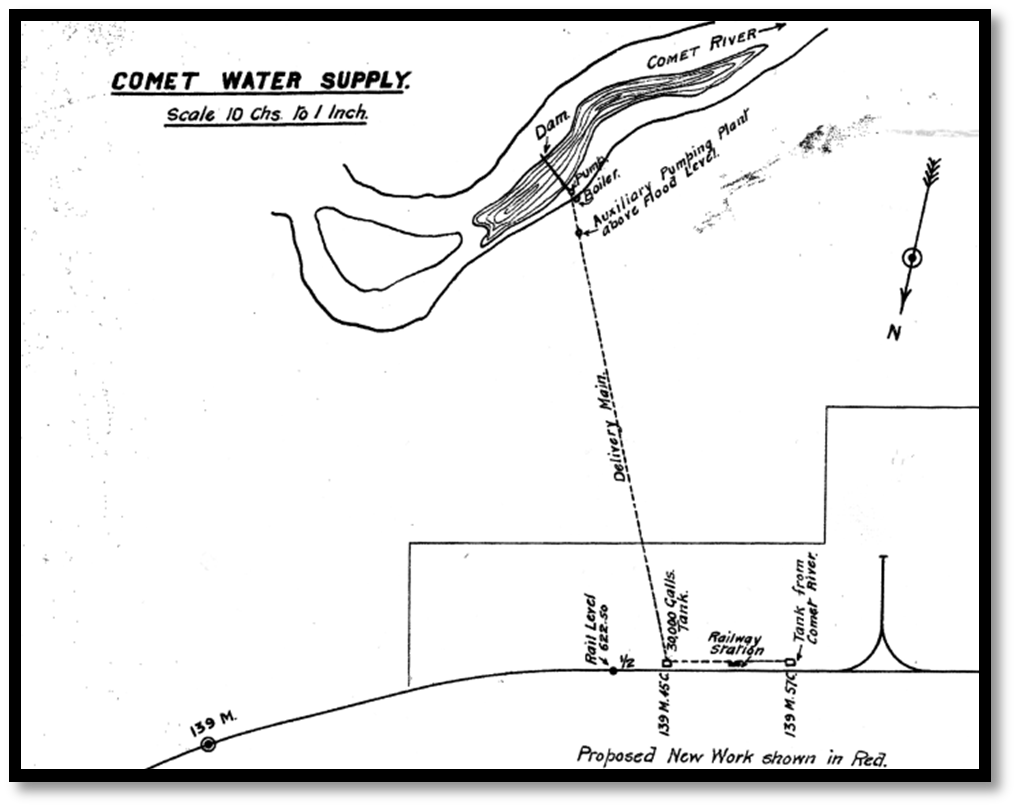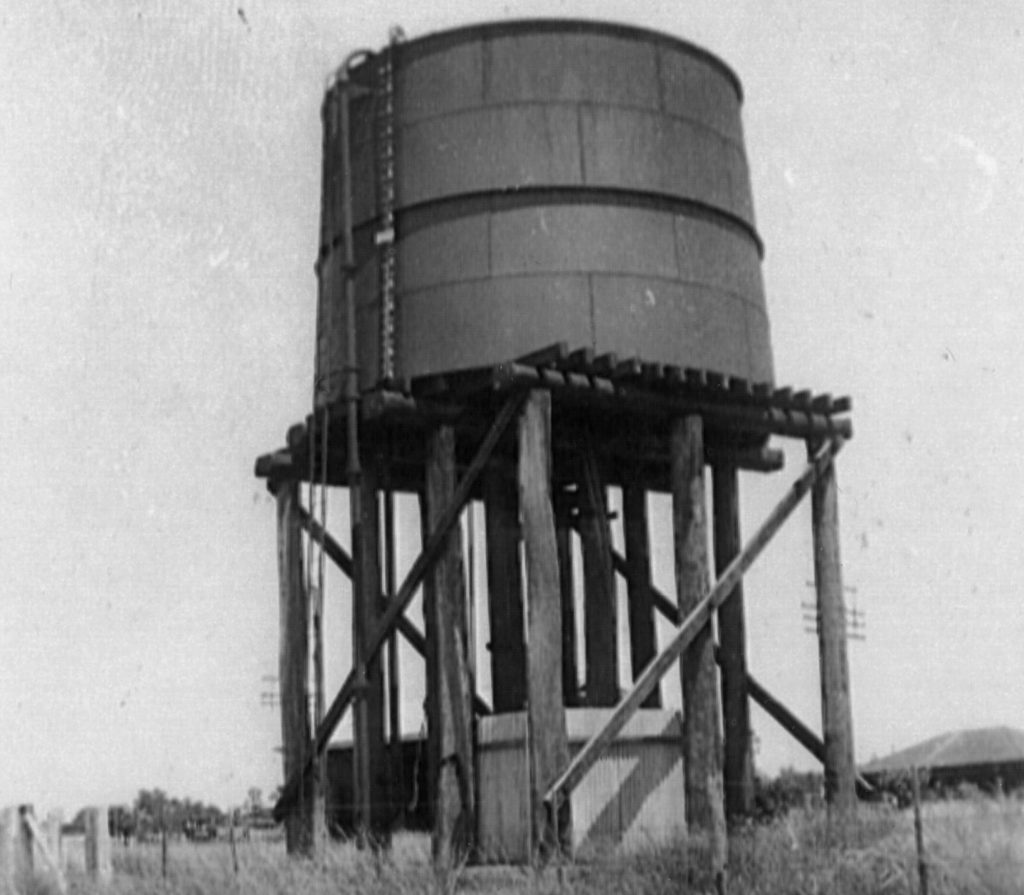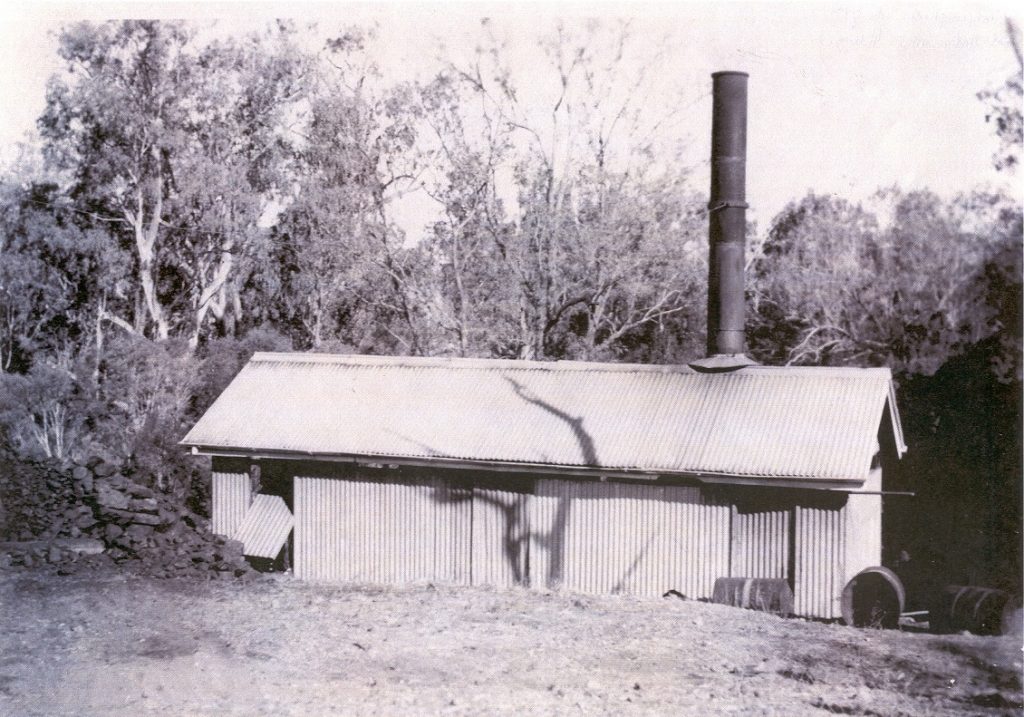Site 16

The town grew to a population of some 1500 people by the following year. Obtaining sufficient clean water for drinking and cooking became a great problem.
This precious commodity was carted from the waterholes in the Comet River and delivered to the town. At that time the river was a string of waterholes which only filled when it rained sufficiently to cause the river to run.
Can you imagine the waterholes in the river producing enough water for approximately 1500 people, their cattle and horses and other farm animals? Remember there was no dam on the river at that time.
COMET RIVER WELL
1878 was a dry year, which affected the water holes in the river. Railway Engineer Robert Ballard had sunk a well in the riverbed to the west of the town. The well was to supply water for his steam locomotives. This well was close to where his men were building the timber rail bridge over the Comet River. This well was reopened during the severe 1969 drought by Tom Dunbar to water his cattle and horses.
A steam driven pump situated on the eastern high bank of the river drew the water from the well and pumped the water into tanks to service the locomotives. We are not sure who was the first man engaged as a pump operator but later Henry McKinlay, then, in later years, William Ellis took on this duty.
POOR WATER SUPPLY 1878
54 DEATHS
The water situation became so bad in the summer of 1878 before the rains came, that the townspeople asked to draw water from Ballard’s well. It is interesting to note that of the 54 burials that year in the Cometville cemetery, 38 of these were children. I can only imagine that the scarcity of water had something to do with their deaths. Cleanliness would not have been a high priority with the shortage of water. There is absolutely no doubt that families and single men in the town suffered terrible privation at this time.
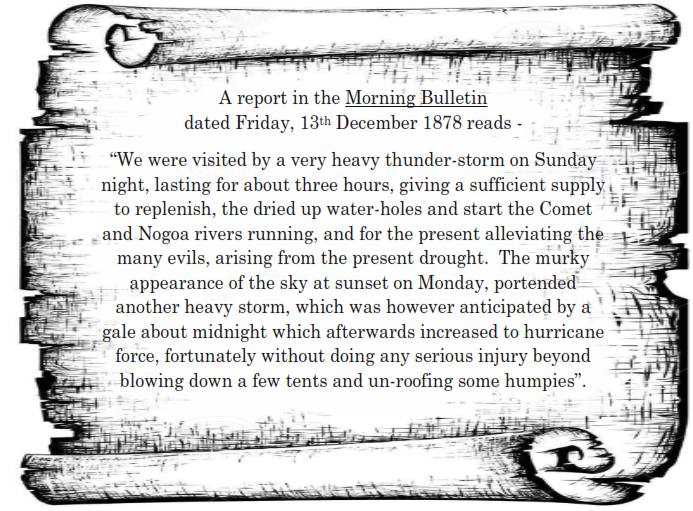
NEW WELL IN COMET
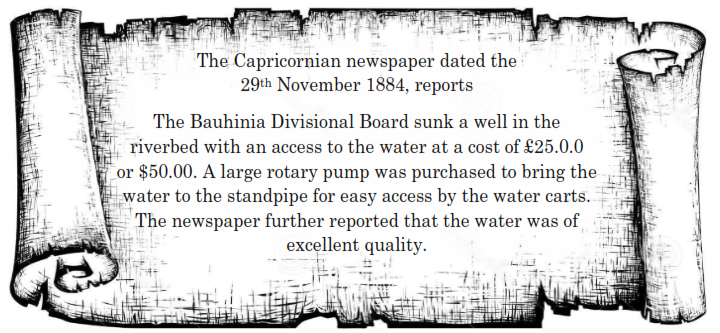
In the book “Springsure 100 years of local government” there is a report that in 1886 the Board either sunk a deeper well or deepened the existing well. The water was described as being black and putrid. The well was situated to the south of town, a hundred meters below the present weir.
DAM OFF THE COMET RIVER PROPOSED
The Railway Department proposed to build a dam on the Comet River not far from the township to provide a good supply of water for the town and the locomotives.
The Engineer’s name as quoted from the Railway Weir Plan was W. Pagan and the date appears to be 1911 but this is not verified. William Pagan was born at Holstein, Dumfriesshire, Scotland in 1850. There is no date of his immigration to Australia, however on the 21 of January 1882, he was appointed a District Engineer with Queensland Railways. In 1902 he became Chief Engineer and appointed Deputy Commissioner in 1911. He died on the 9th September 1924 at Southport, Queensland.
I have been told by a former resident of Comet that this dam was constructed by a German crew of workers, but this has not been confirmed. However, we do know that there were German and Italian men interred during the First World War and working at jobs on the Central Highlands so perhaps this story is correct.
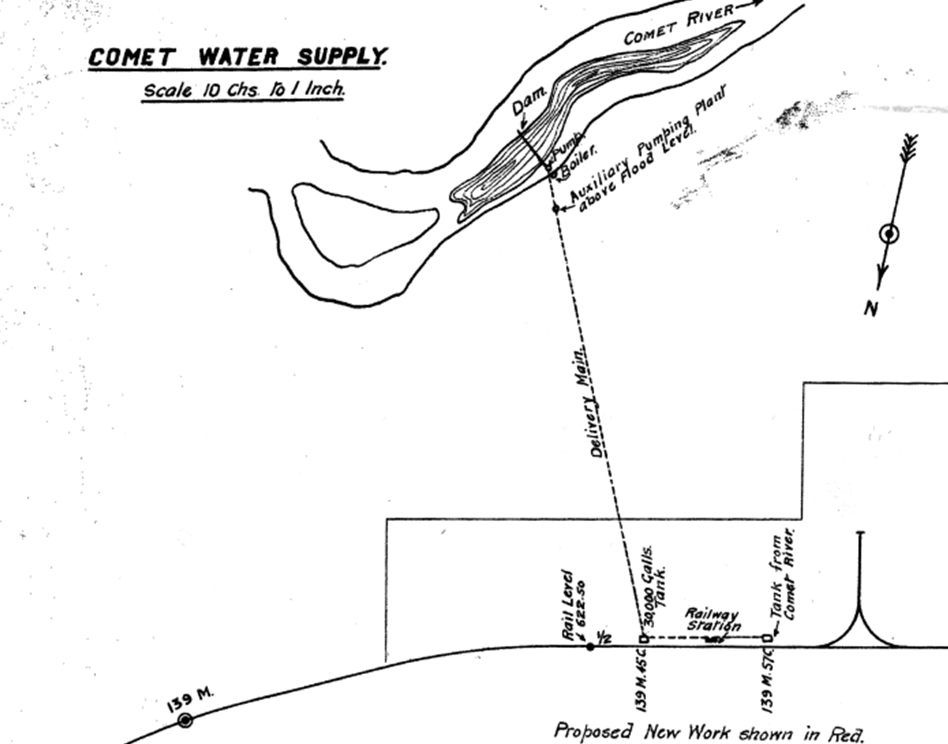
An elderly resident of Comet also told me that a rail line had run to the construction site at the river.
I remember, that there were the remains of what had been bags of cement powder, solidified due to the elements, situated on the railway reserve south east of the Grainco shed at Comet. I do believe that this was the materials site for the dam construction. Unfortunately this relic has since been removed to help in the forming of the rail bed.
WEIR DIMENSIONS
The surface area of the weir is 13ha (32 acres) and holds 50 megalitres when filled to capacity. The weir has been emptied during exceedingly dry times when there hasn’t been a flow of water in the Comet River.
The age of this weir bears testament to the excellent work done by those workers who built the dam wall which was completed over the summer of 1915. The new dam filled that summer with the wet season rains.
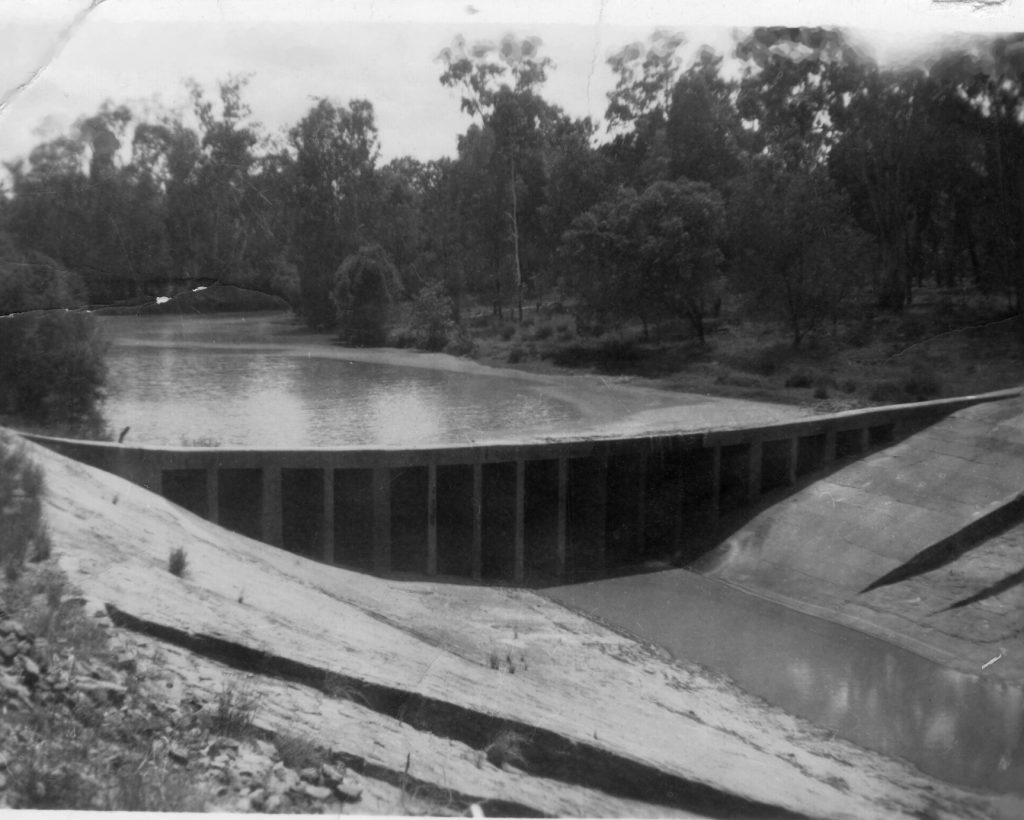
When the steam locomotives ceased to run in the 1960s Queensland Government Railways sold the weir to the Emerald Shire Council for $1,000.00. A water treatment plant was established to give the town clean water. Since then the Central Highlands Regional Council has upgraded the treatment plant which has improved the quality of the town’s water supply.
– Compiled by Rosemary McLeod, 2015.
– Acknowledgements: Springsure 100 Years of Local Government; Greg Hallam (Railway Historian), Elizabeth Carrington, Margaret McLeod, Wikipedia.
– Photos: National Library of Australia; State Library of Queensland; Rosemary McLeod collection; Trevor Kemp collection; Queensland Rail / Greg Hallam.
– Video: Robyn Morawitz.
– Contact: cometales@gmail.com.au



